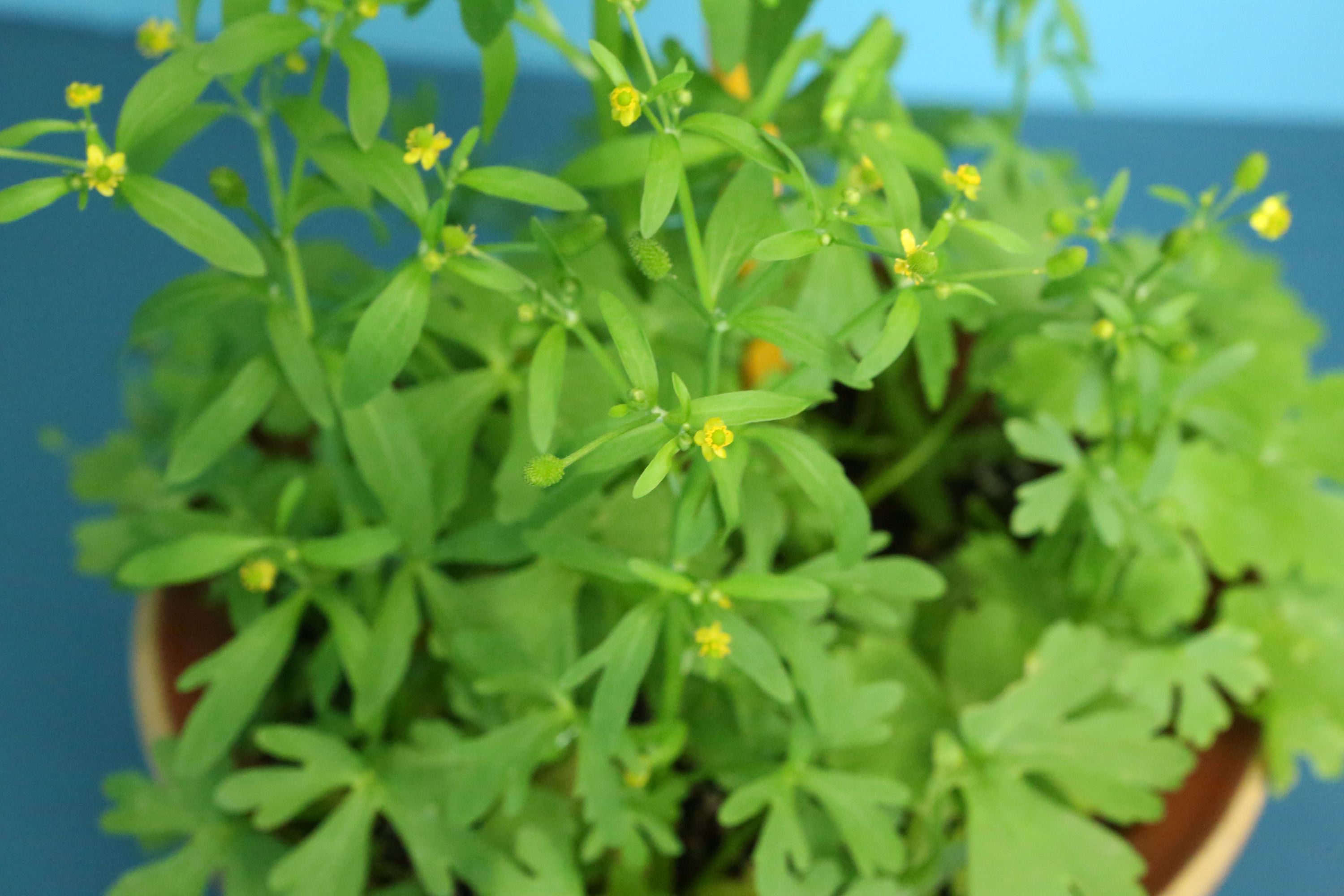Celery-leaved buttercup
(Ranunculus sceleratus)

Description
Ranunculus sceleratus known by the common names celery-leaved buttercup, celery-leaf buttercup, and cursed buttercup is a species of flowering plant in the buttercup family Ranunculaceae. It has a circumpolar distribution in the northern hemisphere, native to temperate and boreal North America and Eurasia, where it grows in wet and moist habitats, including ponds and streambanks. Ranunculus sceleratus is an annual herb growing up to half a meter tall. The leaves are more or less glabrous (hairless) and have small blades each deeply lobed or divided into three leaflets. They are borne on long petioles. The flowers are 5-10mm across with five or fewer yellow petals a few millimeters long and reflexed sepals. The fruit is an achene borne in a cluster of several. While buttercups are toxic due to the presence of the substance protoanemonin, this applies in particular for the cursed buttercup: it is the most toxic buttercup and contains 2.5% protoanemonin. When the leaves are wrinkled, damaged or crushed, they bring out unsightly sores and blisters on human skin. Ranunculus sceleratus has a circumpolar distribution in the northern hemisphere There are two varieties and one subspecies with distinctive distributions: R. sceleratus ssp. reptabundus occurs in northern Finland and north-west Russia. R. scleratus var. multifidus occurs in north western North America. and R. scleratus var. longissimus is found from Minnesota to Alabama according to their biodiversity and plant atlases respectively. Ranunculus is a large genus of about 600 species of flowering plants in the family Ranunculaceae. Members of the genus are known as buttercups, spearworts and water crowfoots. The familiar and widespread buttercup of gardens throughout Northern Europe (and introduced elsewhere) is the creeping buttercup Ranunculus repens, which has extremely tough and tenacious roots. Two other species are also widespread, the bulbous buttercup Ranunculus bulbosus and the much taller meadow buttercup Ranunculus acris. In ornamental gardens, all three are often regarded as weeds. Buttercups usually flower in the spring, but flowers may be found throughout the summer, especially where the plants are growing as opportunistic colonizers, as in the case of garden weeds. The water crowfoots (Ranunculus subgenus Batrachium), which grow in still or running water, are sometimes treated in a separate genus Batrachium (from Greek βάτραχος bátrakhos, "frog").
Taxonomic tree:







